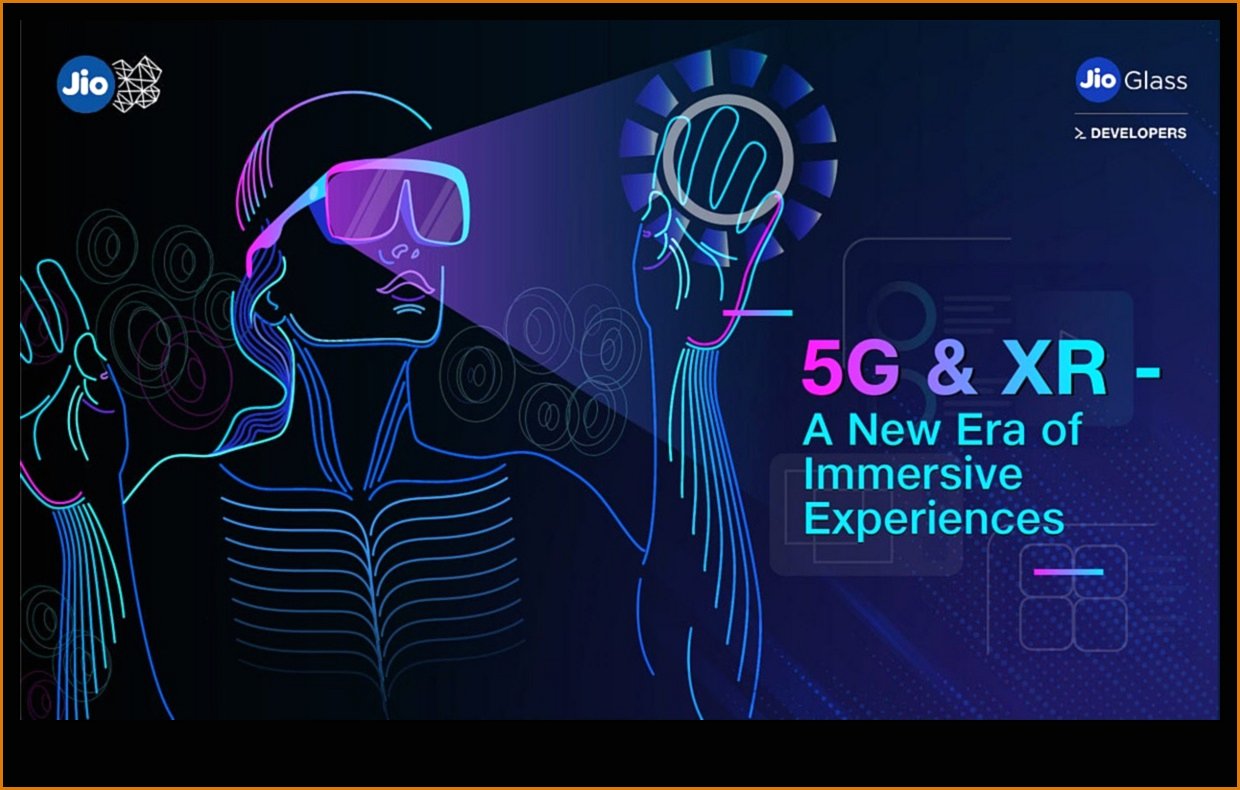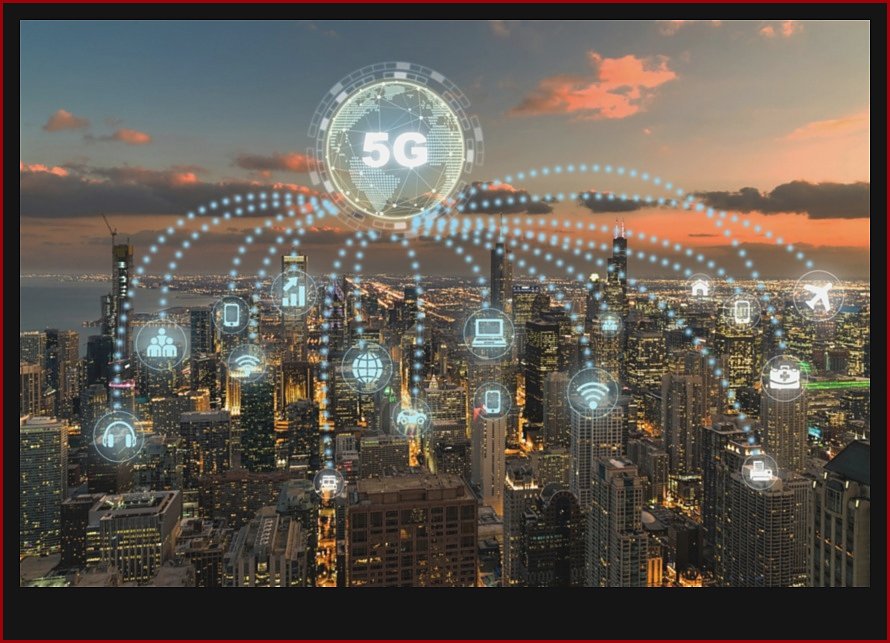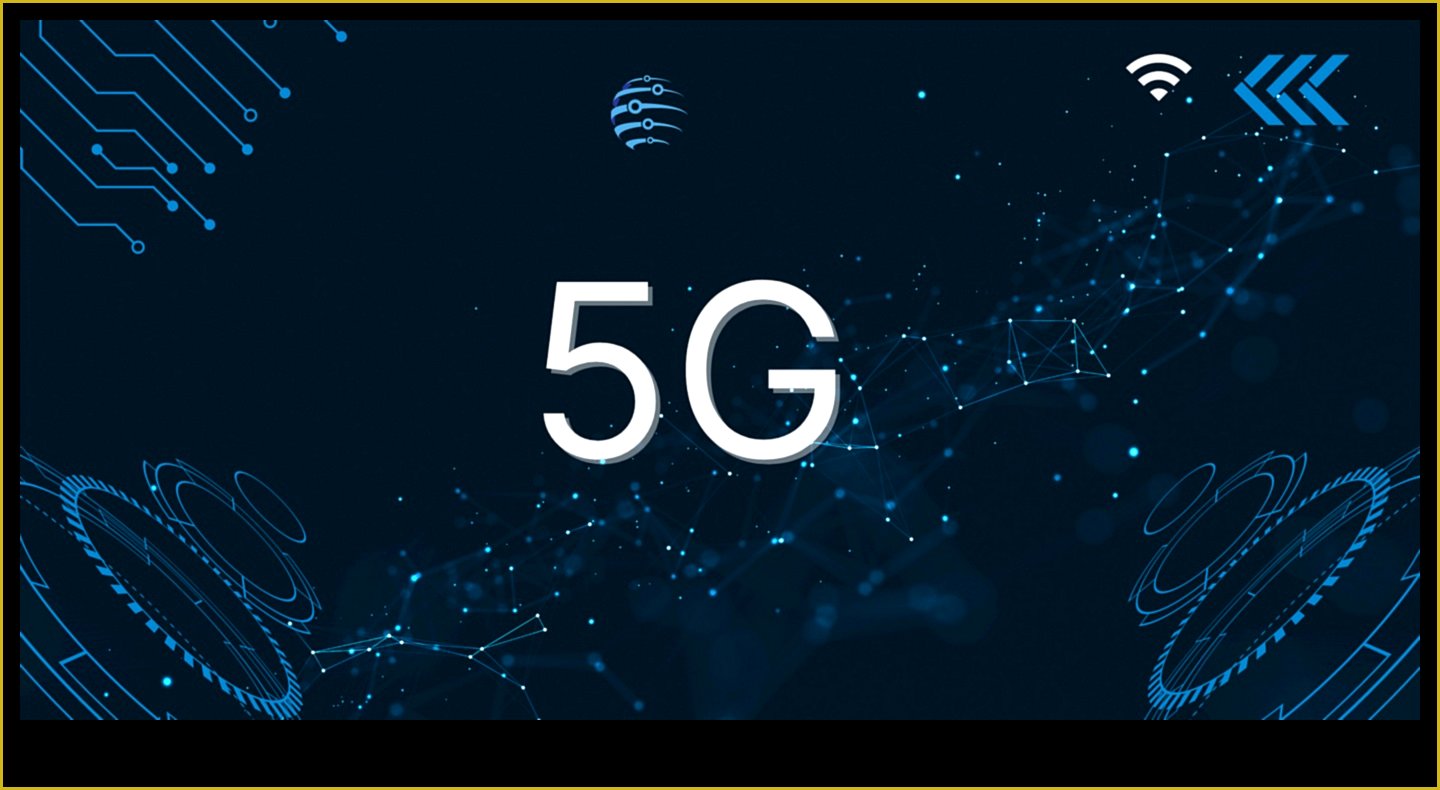
5G Sparks: Igniting Innovation in High-Speed Solutions
5G is the next generation of wireless technology, and it promises to deliver much faster speeds, lower latency, and greater capacity than 4G. This new technology has the potential to revolutionize the way we live and work, and it is already being used to create innovative solutions for businesses and consumers.
In this article, we will discuss the potential of 5G technology and how it can be used to create innovative solutions. We will also explore the benefits and drawbacks of 5G, as well as the challenges that need to be overcome in order to fully realize the potential of this technology.
By understanding the potential of 5G, we can better prepare for the changes that this technology will bring and ensure that we are able to take advantage of its many benefits.
I. Introduction
5G is the fifth generation of wireless technology, and it is a significant upgrade from previous generations. 5G promises to deliver much faster speeds, lower latency, and greater capacity than 4G. This new technology has the potential to revolutionize the way we live and work, and it is already being used to create innovative solutions for businesses and consumers.
In this article, we will discuss the potential of 5G technology and how it can be used to create innovative solutions. We will also explore the benefits and drawbacks of 5G, as well as the challenges that need to be overcome in order to fully realize the potential of this technology.
II. What is 5G?
5G is the fifth generation of wireless technology, and it is a significant upgrade from previous generations. 5G promises to deliver much faster speeds, lower latency, and greater capacity than 4G. This new technology has the potential to revolutionize the way we live and work, and it is already being used to create innovative solutions for businesses and consumers.
The main difference between 5G and previous generations of wireless technology is the use of new radio frequencies. 5G uses higher frequencies than previous generations, which allows for much faster speeds. 5G also uses a different modulation scheme, which allows for lower latency. Finally, 5G uses a new network architecture, which allows for greater capacity.
These new features of 5G make it a much more powerful technology than previous generations. 5G can be used to support a wide variety of applications, including high-definition video streaming, virtual reality, and self-driving cars. 5G is also expected to play a major role in the development of the Internet of Things (IoT).
III. Benefits of 5G
The benefits of 5G are numerous. 5G promises to deliver much faster speeds, lower latency, and greater capacity than 4G. This new technology has the potential to revolutionize the way we live and work, and it is already being used to create innovative solutions for businesses and consumers.
Here are some of the benefits of 5G:
- Faster speeds: 5G promises to deliver speeds of up to 10 gigabits per second (Gbps). This is much faster than the speeds offered by 4G, which typically range from 10 to 100 megabits per second (Mbps).
- Lower latency: 5G also promises to have much lower latency than 4G. Latency is the time it takes for a data packet to travel from one point to another. 5G latency is expected to be in the range of one millisecond (ms), which is comparable to the latency of wired connections.
- Greater capacity: 5G also promises to have much greater capacity than 4G. This means that 5G networks will be able to support more devices and users than 4G networks.

II. What is 5G?
5G is the fifth generation of wireless technology, and it is the successor to 4G LTE. 5G promises to deliver much faster speeds, lower latency, and greater capacity than 4G LTE. This will enable a wide range of new applications and services, such as:
* High-definition streaming video
* Virtual reality and augmented reality
* Self-driving cars
* Smart cities
* Industrial automation
5G is still in its early stages of development, but it is expected to have a major impact on the way we live and work.
III. Benefits of 5G
5G is the next generation of wireless technology, and it promises to deliver a number of benefits over previous generations of wireless technology. These benefits include:
Higher speeds: 5G networks are capable of delivering speeds of up to 10 gigabits per second, which is significantly faster than current 4G networks. This increased speed will allow for faster downloads, streaming, and gaming.
Lower latency: 5G networks also have lower latency, which means that data packets are sent and received more quickly. This reduced latency will make it possible for applications such as self-driving cars and virtual reality to function more smoothly.
Greater capacity: 5G networks are capable of supporting a much greater number of devices than previous generations of wireless technology. This increased capacity will be essential for supporting the growing number of connected devices in the Internet of Things.
Improved coverage: 5G networks will also provide improved coverage, meaning that users will be able to connect to a 5G network in more places. This improved coverage will be especially important for rural areas that currently have limited access to high-speed internet.
These are just a few of the benefits that 5G has to offer. As 5G networks continue to roll out, we can expect to see even more benefits emerge.

IV. Drawbacks of 5G
Despite the many benefits of 5G, there are also some potential drawbacks to consider. These include:
Higher cost: 5G networks are more expensive to build and operate than previous generations of wireless technology. This means that 5G services may be more expensive for consumers.
Less coverage: 5G networks are still under development, and they are not yet as widely available as 4G networks. This means that 5G devices may not be able to connect to a 5G network in all areas.
More power consumption: 5G devices use more power than 4G devices. This means that 5G devices may have shorter battery life than 4G devices.
Health concerns: There is some concern that 5G radiation could be harmful to human health. However, there is no scientific evidence to support this claim.
Overall, the potential drawbacks of 5G are outweighed by the benefits. 5G is a faster, more reliable, and more secure wireless technology that has the potential to revolutionize the way we live and work.

5. 5G Technology
5G is the fifth generation of wireless technology, and it promises to deliver much faster speeds, lower latency, and greater capacity than previous generations of wireless technology. 5G is expected to be a major driver of innovation in a variety of industries, including healthcare, transportation, and manufacturing.
5G is based on a new set of radio frequencies called millimeter waves, which have much higher bandwidth than the frequencies used by previous generations of wireless technology. This allows 5G networks to support much faster speeds. 5G networks are also expected to have much lower latency than previous generations of wireless technology, which will make them more suitable for applications that require real-time communication, such as self-driving cars and virtual reality.
5G networks are also expected to have much greater capacity than previous generations of wireless technology. This will allow 5G networks to support a much larger number of devices per square kilometer, which will be essential for applications such as the Internet of Things.
5G is still a relatively new technology, and it is not yet widely available. However, 5G networks are being deployed in a number of countries around the world, and it is expected that 5G will become the dominant wireless technology in the years to come.

VI. 5G Applications
5G is expected to have a wide range of applications, including:
Mobile broadband: 5G will provide much faster mobile data speeds than current 4G networks, enabling users to download large files, stream high-definition video, and play online games with minimal lag.
Fixed wireless access: 5G can be used to provide high-speed broadband internet access to homes and businesses that are not served by traditional wired networks.
Industrial automation: 5G’s low latency and high bandwidth will make it possible to connect and control machines in factories and other industrial settings in real time. This will enable new levels of automation and efficiency.
Smart cities: 5G can be used to connect sensors and devices in cities, providing real-time data that can be used to improve traffic flow, energy efficiency, and public safety.
Virtual reality and augmented reality: 5G’s high bandwidth and low latency will make it possible to stream VR and AR content with minimal lag, enabling immersive experiences.
Self-driving cars: 5G can be used to connect self-driving cars to the internet, providing them with real-time data about their surroundings. This will make self-driving cars safer and more efficient.
Other applications: 5G is still a new technology, and its potential applications are still being explored. Some other potential applications for 5G include:
* Telemedicine
* Remote surgery
* Drone delivery
* Online gaming
* 3D printing
* Education
* Entertainment
As 5G networks become more widespread, we can expect to see even more innovative applications for this technology.
VII. 5G Security
5G security is a critical issue that must be addressed in order to ensure that this new technology is safe and reliable. There are a number of potential security risks associated with 5G, including:
Denial-of-service attacks: 5G networks are expected to be much more complex and interconnected than previous generations of wireless networks, which could make them more vulnerable to denial-of-service attacks.
Man-in-the-middle attacks: 5G networks will use new technologies such as network slicing and edge computing, which could create new opportunities for attackers to eavesdrop on or manipulate traffic.
Spoofing attacks: 5G networks will use new technologies such as self-organizing networks (SON), which could make it easier for attackers to spoof devices and gain unauthorized access to networks.
Malware attacks: 5G networks will be used to power a wide range of new devices and applications, which could create new opportunities for malware attacks.
In order to address these security risks, 5G networks will need to be designed with security in mind. This will require the use of a variety of security measures, such as:
Encryption: All traffic on 5G networks will need to be encrypted to protect it from eavesdropping and manipulation.
Authentication: Devices and users will need to be authenticated before they are allowed to access 5G networks.
Access control: Access to 5G networks will need to be restricted to authorized users and devices.
Intrusion detection and prevention systems: 5G networks will need to be equipped with intrusion detection and prevention systems to identify and mitigate attacks.
By implementing these security measures, 5G networks can be made more secure and reliable. However, it is important to note that 5G security is an ongoing process, and new security risks will likely emerge as the technology evolves. It is therefore important for 5G networks to be continuously monitored and updated to ensure that they remain secure.
5G Regulation
5G regulation is a complex and evolving area, as governments and regulators around the world work to ensure that this new technology is deployed in a safe and responsible manner. There are a number of key issues that regulators are considering, including:
- The allocation of spectrum for 5G networks
- The security of 5G networks
- The impact of 5G on other wireless networks
- The potential for 5G to be used for surveillance purposes
Governments and regulators are working to develop policies and regulations that will address these issues and ensure that 5G is deployed in a way that benefits society as a whole.
In the United States, the Federal Communications Commission (FCC) is responsible for regulating 5G networks. The FCC has already taken a number of steps to facilitate the deployment of 5G, including:
- Allocating spectrum for 5G networks
- Establishing rules for 5G networks
- Providing funding for 5G research and development
The FCC is continuing to work on developing policies and regulations that will ensure that 5G is deployed in a safe and responsible manner.
Other countries are also taking steps to regulate 5G. In China, the Ministry of Industry and Information Technology (MIIT) is responsible for regulating 5G networks. The MIIT has already allocated spectrum for 5G networks and is working on developing rules and regulations for 5G networks.
The European Union (EU) is also taking steps to regulate 5G. The European Commission is responsible for regulating 5G networks in the EU. The European Commission has already allocated spectrum for 5G networks and is working on developing rules and regulations for 5G networks.
The regulation of 5G is a complex and evolving area. As 5G networks are deployed around the world, governments and regulators will need to continue to work together to ensure that this new technology is deployed in a safe and responsible manner.
IX. 5G Future
5G is still a relatively new technology, but it is already having a significant impact on the world. It is enabling new and innovative applications in a wide range of industries, from healthcare to manufacturing to transportation.
As 5G networks continue to roll out and become more widespread, we can expect to see even more exciting developments in the years to come. Here are a few of the ways that 5G is expected to change the world:
- 5G will make it possible for us to connect to the internet at much faster speeds. This will allow us to download large files in seconds, stream high-definition video without buffering, and play online games with minimal lag.
- 5G will enable new forms of augmented and virtual reality. This technology will allow us to experience immersive virtual worlds, interact with digital objects in the real world, and collaborate with people from anywhere in the world.
- 5G will be used to power self-driving cars. These cars will be able to communicate with each other and with the infrastructure around them, making them safer and more efficient than traditional cars.
- 5G will be used to improve medical care. Doctors will be able to use 5G to remotely monitor patients, perform surgeries, and deliver real-time feedback to patients.
- 5G will be used to create new forms of entertainment. This technology will allow us to watch movies and TV shows in high-definition, play online games with friends, and attend concerts and sporting events from anywhere in the world.
The possibilities for 5G are endless. This technology has the potential to revolutionize the way we live, work, and play. We can’t wait to see what the future holds for 5G!
X. FAQ
Q: What is 5G?
A: 5G is the fifth generation of wireless technology, and it is expected to offer significantly faster speeds, lower latency, and greater capacity than previous generations of wireless technology. 5G is expected to be used for a wide range of applications, including mobile gaming, streaming video, and self-driving cars.
Q: What are the benefits of 5G?
A: The benefits of 5G include:
- Faster speeds: 5G is expected to offer speeds of up to 10 gigabits per second, which is 100 times faster than current 4G networks.
- Lower latency: 5G is expected to have a latency of less than one millisecond, which is much lower than the latency of current 4G networks.
- Greater capacity: 5G is expected to have a much greater capacity than current 4G networks, which will allow more devices to be connected to the network at the same time.
Q: What are the drawbacks of 5G?
A: The drawbacks of 5G include:
- Cost: 5G networks are more expensive to build and deploy than previous generations of wireless networks.
- Coverage: 5G networks are not yet as widely available as 4G networks.
- Health concerns: There have been some concerns about the potential health effects of 5G radiation, but there is no definitive evidence that 5G radiation is harmful to humans.